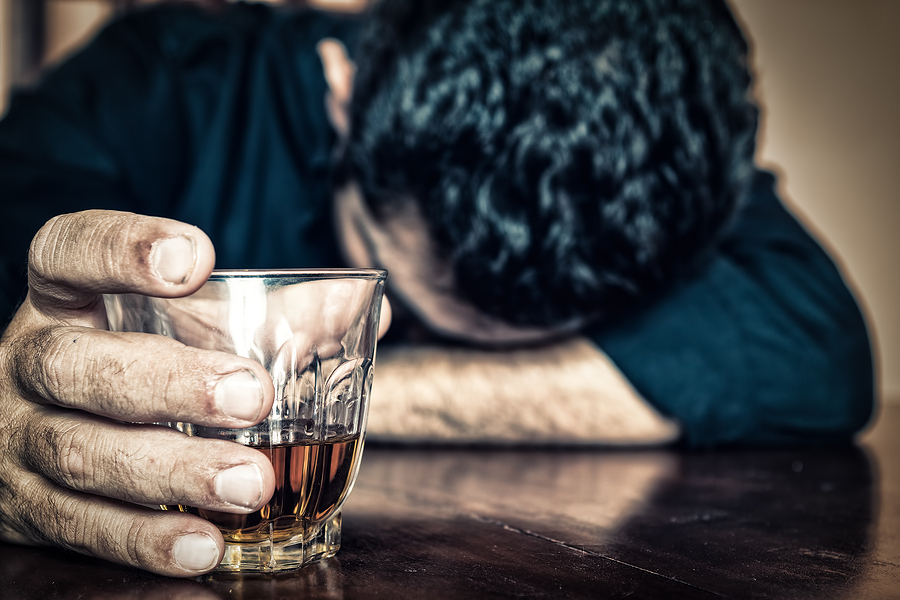About 7 percent of the American population aged 12 and older may struggle with an alcohol use disorder, according to 2013 statistics from the National Institute on Alcohol Abuse and Alcoholism (NIAAA). In 2013, approximately 1.3 million adults (18 and older) sought specialty treatment for alcohol abuse or dependency. Alcoholism is considered a treatable disease, and many who struggle with alcoholism go on to achieve abstinence and sobriety.
Alcohol may seem like an old friend to someone who spent a long time abusing or dependent on alcohol, however. Even while maintaining sobriety, some of the tenants of alcoholism may remain. Someone who is sober, but still suffers from the negative psychological and emotional side effects of alcoholism may be considered a “dry drunk,” Psychology Today reports. Most often perpetuated in the sober community and potentially by members of 12-Step programs like Alcoholics Anonymous (AA), the term dry drunk may often be considered derogatory and offensive.
Some symptoms exhibited by dry drunks may include:
- Resentment toward family and loved ones who may have initiated treatment for these individuals
- Anger, hostility, and irritability surrounding their sobriety
- Frustration and sense of loss over not being able to drink socially or like “normal” people
- Anxiety over rejection or fear of failure
- Feeling overwhelmed about having to take responsibilities for their actions while drinking or as a result of alcohol dependence
- Jealous and resentful of others who may have successes that they don’t and angry over perceived lack of support
- Lack of self-confidence
- Recognition that years may have been lost due to drinking and feeling that it may be too late to start over
- Lack of motivation or willingness to try
- Irresponsibility and unreliability
Medical detox and therapy are often the frontline treatments for alcohol dependency, and much importance is placed on relapse prevention and 12-Step or self-help groups. Emotional recovery and balance should not be minimized either, however. Anyone battling alcohol addiction may benefit greatly from ongoing therapy during recovery, even after completion of a structured treatment program, to help work through some of these psychological issues.
About 7 percent of the American population aged 12 and older may struggle with an alcohol use disorder, according to 2013 statistics from the National Institute on Alcohol Abuse and Alcoholism (NIAAA). In 2013, approximately 1.3 million adults (18 and older) sought specialty treatment for alcohol abuse or dependency. Alcoholism is considered a treatable disease, and many who struggle with alcoholism go on to achieve abstinence and sobriety.
Why Therapy Is Important in Treatment Programs and Recovery
 Addiction and alcohol dependency are not just physical maladies. The National Institute on Drug Abuse (NIDA) publishes that treatment often includes both pharmacological and behavioral methods and should extend beyond the physical stabilization of detox. Behavioral therapies can help people explore their thoughts and emotions, and better understand from where difficult and potentially harmful behaviors may stem. For example, Cognitive Behavioral Therapy (CBT) helps to turn negative emotions into more positive ones through therapy, counseling, and life skills training sessions that can get to the root of addiction. Individuals learn new and healthy coping mechanisms for managing stress, anxiety, and depression through group and individual sessions.
Addiction and alcohol dependency are not just physical maladies. The National Institute on Drug Abuse (NIDA) publishes that treatment often includes both pharmacological and behavioral methods and should extend beyond the physical stabilization of detox. Behavioral therapies can help people explore their thoughts and emotions, and better understand from where difficult and potentially harmful behaviors may stem. For example, Cognitive Behavioral Therapy (CBT) helps to turn negative emotions into more positive ones through therapy, counseling, and life skills training sessions that can get to the root of addiction. Individuals learn new and healthy coping mechanisms for managing stress, anxiety, and depression through group and individual sessions.
Therapy methods may be able to help individuals grieve for the loss of their “friend” the alcohol bottle and move forward with their lives. Helping someone to uncover a new passion or healthy outlet may go a long way in improving psychological distress as well. Creative therapies may include the use of art or music to learn effective communication and expression tools.
Therapy can help individuals to realize that their lives are worth living without alcohol and may boost their self-image, teach new and improved ways to interact with others, and promote healing within the family. Any of the large variety of therapy models available may help individuals to reach healthy emotional balance in recovery and thereafter.
